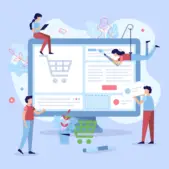Earlier this year on March 23, Lou Rosenfeld, the publisher for Rosenfeld Media, spoke with Chris Hicken, the President and COO of ubiquitous online presence UserTesting in a webinar entitled “The Future of UX.” With years of practice in user experience working to both launch startups and modernize global brands, both Rosenfeld and Hicken have a finger on the pulse when it comes to helping businesses improving UX. For UserTesting’s third annual webinar on the UX industry, the testing and research firm polled 7700 industry leaders to provide a better insight into the changing role of UX in 2016 and beyond.
Here are 5 takeaways from “The Future of UX” Webinar with Lou Rosenfeld and Chris Hicken:
Usability testing is no longer being overlooked
Despite the interest that business leaders have in getting feedback from customers or employees, usability testing has not seen a comparable share of UX budgets in most organizations. Even in companies that are conducting tests, they have been conducted historically only several times a year, despite frequent site changes. But a shift is starting to occur. Of the business leaders polled for the webinar, 59 percent expect their user testing budgets to increase this year. Only 3 percent plan on decreasing their reliance on user testing.
The value of UX is being embraced by new departments
UX isn’t just for websites and applications anymore. The components that make for a good user experience are being embraced and applied to other departments inside organizations. Lou Rosenfeld uses the words of designer Fabricia Teixeira to explain the attitude shift: “Our biggest challenge ahead is to make sure that everyone on the team, from product managers to customer support, understands their role in improving the user’s experience and how crucial that is for business.” In essence, the elements that make up a strong UX (navigation, clarity, functionality and engagement, for instance) are being repurposed for a product management framework. The democratization of UX design is spreading to engineers (7% of those surveyed), marketers (17%), marketing (17%), product development (23%), and others (7 percent%). The distribution of UX principles is increasingly varied compared to the past two years.
Integration will be the big focus for the next five years
When asked specifically about the most important digital trends they’ll be focusing on over the next five years, the business leaders surveyed overwhelmingly emphasized a need to use UX to increase integration. On the one hand, respondents were focused on integrating devices and channels. 35% cited omni-channel experience as a critical focus. 60% cited multi-device interaction. Businesses are thinking from a biological perspective too; voice interaction (35%), touch interface (35%) and gesture-based navigation (27%) were all considered top priorities. This goes to show that user experience is being refocused to bring an even more human element into design.
Businesses are starting to catch on to the benefits of a UX firm
While a majority of businesses still use in-house employees for their UX needs, such a trend is beginning to change. 33% of businesses plan on using an agency or independent contractor to optimize their UX. When it comes to outsourcing UX needs, smaller businesses have been the early adopters. In so doing, they have been able to optimize their existing personnel and reduce overhead to accommodate generally smaller budgets. Firms are just as easily embedded in a client’s business, providing the same quality services as enterprises that employ dozens of in-house UX designers.
UX=CX
User experience is being thought about less in terms of how a website or application functions than in the past. To emphasize the entire customer journey, UX design is being increasingly used to maintain and extend the relationships that businesses have with their clients. That means UX designers are increasingly focused on personalization, using feedback in user testing, tracking metrics and analytics to glean actionable data and benchmarking to increase the likelihood of repeat business.
The concept of what it means to design a positive user experience is changing rapidly. From building websites or applications for two-dimensional surfaces, interoperability and increased human interaction are giving even more form to the practice. Businesses are overwhelmingly catching on to the use of UX design as a competitive advantage, but there is still a lot to learn.


